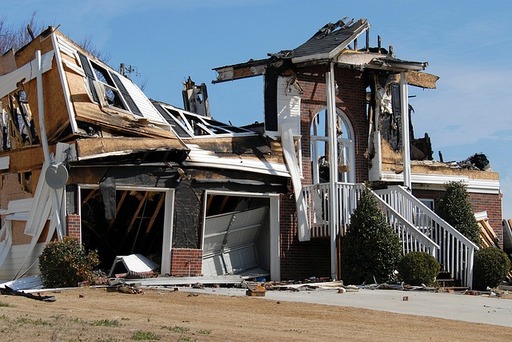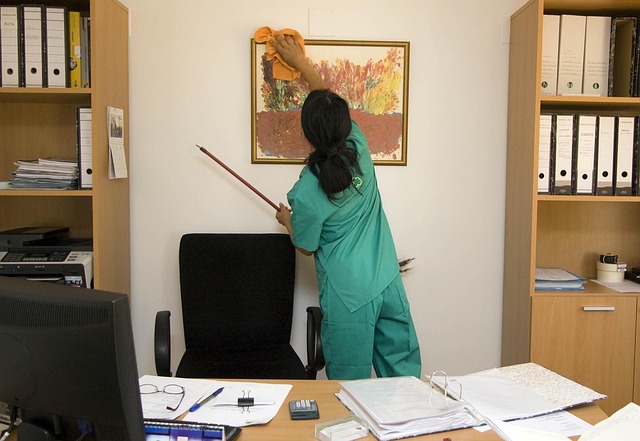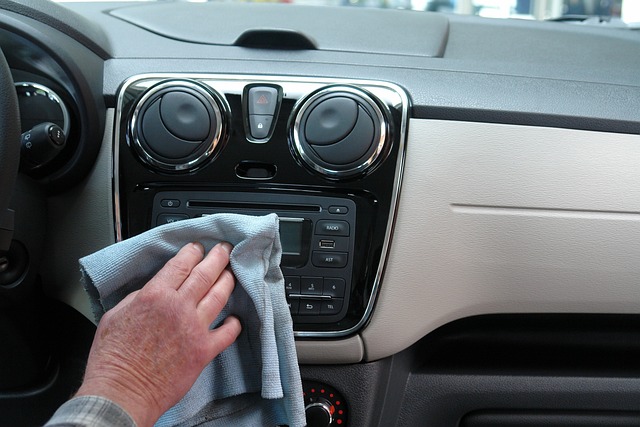Fire, a force of nature that has both the power to create and destroy, can wreak havoc on homes and properties, leaving a trail of destruction in its wake. When a fire strikes, the immediate concern is to ensure the safety of the occupants and extinguish the flames. Once the fire is under control, the daunting task of dealing with the aftermath begins. Fire damage restoration is a complex and arduous process that encompasses various aspects of recovery, including cleaning and salvaging belongings.
In this comprehensive guide, we will explore the intricacies of fire damage restoration, with a specific focus on the critical steps involved in cleaning and salvaging personal belongings. Whether you have experienced a minor fire incident or a full-blown conflagration, this article will provide you with the knowledge and insights needed to navigate the challenging process of reclaiming your property and possessions.
Here is our related post on The Pros and Cons of Using a Steam Cleaner in Your Home which you will not want to miss.
The Impacts of Fire Damage
Before delving into the intricacies of fire damage restoration, it is crucial to understand the extent of devastation that fires can cause. A fire can be triggered by various factors, including electrical faults, cooking mishaps, wildfires, or even arson. Regardless of the cause, its impact can be overwhelming.
Immediate Effects of Fire
- Structural Damage: The flames can consume or weaken the structural integrity of your property, making it unsafe to inhabit.
- Smoke and Soot: Smoke and soot can infiltrate every nook and cranny of your home, leaving behind a pungent odor and unsightly stains.
- Water Damage: Firefighters use water to extinguish fires, which can lead to water damage. Excessive moisture can promote mold growth and further structural deterioration.
- Loss of Belongings: Fire can reduce your personal belongings to ashes, leaving you with the grief of losing irreplaceable items.
Long-Term Effects of Fire
- Health Hazards: The lingering effects of smoke and soot can pose health risks. Prolonged exposure to smoke residue can lead to respiratory issues and other health problems.
- Mental Trauma: The emotional trauma of witnessing your home or personal belongings consumed by flames can be significant. Coping with the aftermath can be mentally exhausting.
- Financial Strain: Fire damage restoration can be expensive, and depending on your insurance coverage, you may face substantial out-of-pocket expenses.
- Displacement: During the restoration process, you may be forced to temporarily relocate, adding to the disruption in your life.
See also our post on How to Clean and Polish Your Silverware and Jewelry
Fire Damage Restoration Process
Fire damage restoration is a multi-faceted process that demands a systematic and comprehensive approach. The goal is to mitigate damage, clean and restore the property, and salvage as many personal belongings as possible. Let’s break down the steps involved:
1. Ensure Safety First
Safety should always be the top priority when dealing with the aftermath of a fire. Before attempting any restoration work, make sure that the property is safe to enter. If there are structural concerns, electrical issues, or health hazards, it is essential to address them before proceeding. It is advisable to consult with professionals who specialize in fire damage assessment to determine the extent of damage and the safety of your property.
2. Contact Your Insurance Company
One of the first steps after a fire incident is to contact your insurance company to initiate the claims process. Your homeowner’s insurance policy should cover fire damage, but the extent of coverage can vary. An insurance adjuster will assess the damage and guide you through the claims process, helping you understand what is covered and what isn’t.
3. Assessment and Damage Documentation
After ensuring your safety and contacting your insurance company, a thorough assessment of the damage should be conducted. Document the damage with photographs and written descriptions. This documentation will be crucial during the insurance claims process and when planning the restoration work.
4. Temporary Repairs
Before embarking on the long process of full restoration, it may be necessary to make temporary repairs to prevent further damage. This can include boarding up broken windows, covering damaged roofing, and securing the property to deter theft or vandalism.
5. Removing Water and Drying
In many cases, water damage is a significant concern after a fire, as firefighters use water to extinguish flames. Excess water must be removed, and the property thoroughly dried to prevent mold growth. Specialized equipment, like dehumidifiers and air movers, is used for this purpose.
6. Smoke and Soot Removal
Smoke and soot can permeate walls, ceilings, and belongings, leaving a lingering odor and discoloration. The removal of smoke and soot is a meticulous process that involves specialized cleaning techniques and equipment. Ozone generators and thermal fogging may be used to neutralize odors.
7. Structural Cleaning and Restoration
Once the initial cleaning is complete, the focus shifts to the structural components of the property. This may involve repairing or replacing damaged walls, ceilings, and flooring. In some cases, the structural integrity of the building may be compromised, necessitating extensive reconstruction.
8. Salvaging Belongings
The salvage process is a critical aspect of fire damage restoration, as it involves reclaiming personal belongings that may have been affected by the fire, smoke, or water. Salvaging items that hold sentimental or monetary value can be emotionally rewarding and financially practical.
Here is our post on How to Clean Car Interior After Spills and Accidents
Cleaning and Salvaging Belongings
The process of salvaging belongings after a fire is a meticulous and time-consuming task. It requires a combination of patience, knowledge, and specialized equipment. Here are the steps involved in cleaning and salvaging your personal items:
Prioritize Items
Start by identifying and prioritizing the items you want to salvage. It’s essential to focus on items with sentimental value or those that are expensive to replace. Keep in mind that not all items may be salvageable.
Personal Protective Equipment (PPE)
Before handling any items, make sure to wear appropriate personal protective equipment, including gloves, masks, and, if necessary, a full protective suit. This will protect you from potential health hazards due to smoke, soot, or contaminants on the items.
Assess the Damage
Carefully examine each item to assess the extent of damage. Consider factors such as exposure to heat, smoke, water, and soot. Items that have been directly exposed to flames may be irreparably damaged.
Consult Professionals
For valuable or particularly delicate items, it’s advisable to consult professionals who specialize in fire damage restoration. They have the expertise and equipment to salvage a wide range of items, from furniture to artwork.
Cleaning and Deodorizing
Cleaning and deodorizing items should be done meticulously. The process varies depending on the material of the item. Here are some general guidelines:
Clothing and Fabrics
- Washable items: Wash clothing and fabrics using a mild detergent and rinse thoroughly. Dry clean-only items should be taken to a professional dry cleaner specializing in fire damage restoration.
- Non-washable items: Delicate fabrics like silk or wool may require professional dry cleaning.
Furniture
- Wood furniture: Clean wood furniture with a mild wood cleaner, followed by polishing. Special care may be needed if there is smoke or soot damage.
- Upholstered furniture: The cleaning approach will depend on the type of upholstery. Consult professionals for items like sofas or armchairs.
Electronics
- Do not attempt to power on: Electronics exposed to fire or water should not be powered on. Contact a professional electronics restoration service to assess and clean them.
Art and Collectibles
- Artwork: Valuable artwork should be evaluated by a professional conservator. Do not attempt to clean or restore it yourself.
- Collectibles: Consult experts in collectible restoration for items like coins, stamps, or memorabilia.
Storage
Proper storage of salvaged items is crucial. Items should be stored in a clean, dry, and safe environment to prevent further damage. Avoid sealing items in plastic bags, as this can trap moisture and exacerbate issues like mold growth.
Professional Cleaning Services
For many items, especially valuable or sentimental ones, it is advisable to seek professional cleaning and restoration services. These experts have the knowledge and equipment to handle delicate and specialized items. They can also provide documentation of the restoration process, which may be necessary for insurance claims.
Dispose of Unsalvageable Items
Not all items can be salvaged. Some may be too severely damaged or contaminated to restore. Properly dispose of these items in accordance with local regulations. Make sure to document these items for your insurance claim.
See also our post on How Regular Cleaning Helps Your Home’s Electrical System
Challenges in Salvaging Belongings
Salvaging belongings after a fire is not always straightforward. There are several challenges you may encounter during the process:
Smoke and Soot Damage
Smoke and soot can penetrate deeply into materials, making it challenging to fully remove the odor and stains. Specialized cleaning methods and equipment are required to address this issue effectively.
Water Damage
Water used to extinguish the fire can lead to mold growth if not properly addressed. Mold can damage items and pose health risks. Thorough drying and dehumidification are essential to prevent mold.
Delicate and Valuable Items
Items such as antiques, artwork, and collectibles may require specialized restoration services. Attempting to clean or restore these items without expertise can result in irreparable damage.
Emotional Attachment
The process of salvaging belongings can be emotionally challenging, as it may involve confronting the loss of cherished possessions. Seeking support from friends, family, or a counselor can be helpful during this time.
Insurance and Fire Damage Restoration
Insurance plays a significant role in the fire damage restoration process. Your homeowner’s insurance policy typically covers fire damage, but the extent of coverage can vary depending on your policy and the cause of the fire. Here are some key points to consider regarding insurance and restoration:
Contact Your Insurance Company Promptly
Notify your insurance company as soon as possible after a fire incident. This will initiate the claims process and allow the insurance adjuster to assess the damage.
Document Everything
Thoroughly document the damage to your property and belongings. This includes photographs, written descriptions, and any relevant receipts or records of your possessions.
Understand Your Coverage
Review your insurance policy to understand what is covered and what isn’t. Be aware of any limits or deductibles that may apply to your claim. Discuss coverage details with your insurance adjuster.
Keep Records of Expenses
Keep detailed records of all expenses related to the restoration process, including temporary housing, cleaning services, and repair costs. These expenses may be reimbursable through your insurance claim.
Work with Your Insurance Adjuster
Cooperate with your insurance adjuster during the claims process. Provide them with all necessary documentation and information. Ask questions and seek clarification as needed.
Consider a Public Adjuster
If you feel that your insurance company is not offering a fair settlement, you may want to consider hiring a public adjuster. These professionals can advocate on your behalf to ensure you receive a just settlement.
How to Prevent Future Fire Damage
Once you have completed the fire damage restoration process, it’s essential to take steps to prevent future fire incidents. Here are some measures to consider:
Fire Safety Systems
Install and maintain fire safety systems in your home, including smoke detectors, fire extinguishers, and sprinkler systems. Regularly test these devices to ensure they are in working order.
Fire-Resistant Building Materials
Consider using fire-resistant building materials for your home’s construction or renovation. This can help slow the spread of flames in the event of a fire.
Electrical Safety
Electrical faults are a common cause of fires. Have your electrical system inspected regularly, and avoid overloading circuits or using damaged electrical cords.
Safe Storage
Store flammable materials, such as gasoline, propane, and cleaning products, in a safe and secure location away from the main structure of your home.
Safe Cooking Practices
Practice safe cooking habits to reduce the risk of kitchen fires. Never leave cooking unattended, and keep flammable materials away from the stove.
Develop a Family Fire Escape Plan
Create a fire escape plan with your family, designating escape routes and a meeting point outside the home. Ensure that everyone knows how to use escape routes and safely exit the house in case of a fire.
See also our post on How to Choose an Eco-Friendly Cleaning Service for Your Business: A Comprehensive Guide
Conclusion
Fire damage restoration is a challenging and multifaceted process that involves cleaning and salvaging personal belongings, along with restoring the property to its pre-fire condition. While it can be emotionally and financially taxing, understanding the steps involved and working closely with your insurance company can make the process more manageable.
Salvaging belongings after a fire requires a combination of patience, knowledge, and specialized cleaning techniques. Prioritizing valuable and sentimental items, using appropriate personal protective equipment, and consulting professionals when needed are key steps in this process.
Ultimately, fire damage restoration is about reclaiming your life and your home after a traumatic event. With the right guidance and support, you can rebuild and recover, making your house once again a place of safety and comfort.














